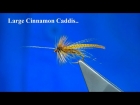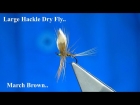Neoprene Beetle
This neat little beetle’s body is made from extruded neoprene cord, which is widely available and a really useful tying material
I’ve been using this one quite a bit lately for fishing small upland rivers with overhanging trees. These are prime places for trout to garner some extra nutrition from beetles and other bugs that lose their footing and fall helplessly into the water below.
The beetle’s body is made from extruded neoprene cord. This foam is widely available online, just search for neoprene rubber sponge cord. The closed cell material is made for making gaskets and for sealing gaps around windows frames etc. It comes in a range of sizes, with the 3mm, 4mm and 5mm diameters being the most useful for fly tying.
If you can’t get it then substitute round foam booby cord, but I think the smooth semi-gloss surface of extruded black neoprene looks more beetle-like.
Nick Thomas
The Neoprene Beetle is an effective fly for fishing on its own, or as an indicator with a nymph hanging underneath in a duo. With the bright pink sighter, you shouldn’t miss any takes as the beetle disappears.
Read more about why you should register.
More content from the front page
Since you got this far …
… I have a small favor to ask.
Long story short
Support the Global FlyFisher through several different channels, including PayPal.
Long story longer
The Global FlyFisher has been online since the mid-90's and has been free to access for everybody since day one – and will stay free for as long as I run it.
But that doesn't mean that it's free to run.
It costs money to drive a large site like this.
See more details about what you can do to help in this blog post.





























































